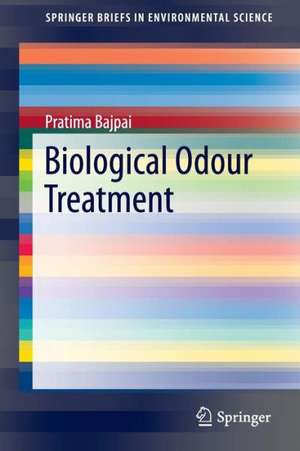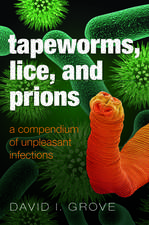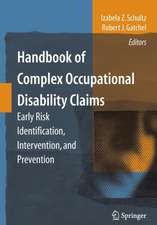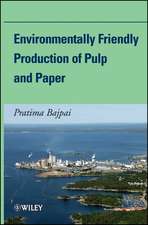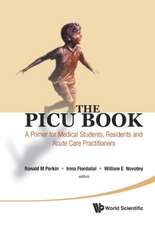Biological Odour Treatment: SpringerBriefs in Environmental Science
Autor Pratima Bajpaien Limba Engleză Paperback – 15 aug 2014
Innumerable industrial processes release malodourous and harmful vapours. The human sense of smell can detect some noxious chemicals, such as the sulphurous by-products of paper manufacturing, at concentrations of one part per billion. This e-book shows what has been achieved in combating offensive and harmful odours. While conventional air pollution control technologies can treat a wide variety of pollutants at higher concentrations, the chapters cover the more refined biological methods used to deal with odours and volatile organic compounds in low concentrations. These include bio scrubbers and bio trickling filters. Standing alongside its detailed discussion of the health impacts of total reduced sulphur compounds, and the composition of paper pulp industry emissions, this publication offers comprehensive and in-depth treatment of some of the most potent anti-odour technologies yet devised.
Din seria SpringerBriefs in Environmental Science
-
 Preț: 348.77 lei
Preț: 348.77 lei -
 Preț: 382.57 lei
Preț: 382.57 lei -
 Preț: 378.12 lei
Preț: 378.12 lei -
 Preț: 378.80 lei
Preț: 378.80 lei -
 Preț: 381.98 lei
Preț: 381.98 lei -
 Preț: 347.80 lei
Preț: 347.80 lei - 15%
 Preț: 464.18 lei
Preț: 464.18 lei -
 Preț: 378.12 lei
Preț: 378.12 lei -
 Preț: 377.53 lei
Preț: 377.53 lei -
 Preț: 379.09 lei
Preț: 379.09 lei -
 Preț: 381.00 lei
Preț: 381.00 lei -
 Preț: 383.93 lei
Preț: 383.93 lei -
 Preț: 175.58 lei
Preț: 175.58 lei -
 Preț: 475.83 lei
Preț: 475.83 lei -
 Preț: 380.07 lei
Preț: 380.07 lei -
 Preț: 378.92 lei
Preț: 378.92 lei -
 Preț: 411.93 lei
Preț: 411.93 lei -
 Preț: 375.62 lei
Preț: 375.62 lei -
 Preț: 375.45 lei
Preț: 375.45 lei -
 Preț: 378.92 lei
Preț: 378.92 lei -
 Preț: 377.57 lei
Preț: 377.57 lei -
 Preț: 377.35 lei
Preț: 377.35 lei -
 Preț: 378.34 lei
Preț: 378.34 lei -
 Preț: 344.67 lei
Preț: 344.67 lei -
 Preț: 374.30 lei
Preț: 374.30 lei -
 Preț: 362.43 lei
Preț: 362.43 lei -
 Preț: 446.26 lei
Preț: 446.26 lei - 5%
 Preț: 361.96 lei
Preț: 361.96 lei -
 Preț: 376.43 lei
Preț: 376.43 lei -
 Preț: 380.63 lei
Preț: 380.63 lei -
 Preț: 375.84 lei
Preț: 375.84 lei -
 Preț: 478.53 lei
Preț: 478.53 lei -
 Preț: 383.33 lei
Preț: 383.33 lei -
 Preț: 375.23 lei
Preț: 375.23 lei -
 Preț: 377.57 lei
Preț: 377.57 lei -
 Preț: 381.59 lei
Preț: 381.59 lei -
 Preț: 379.48 lei
Preț: 379.48 lei -
 Preț: 376.04 lei
Preț: 376.04 lei -
 Preț: 413.84 lei
Preț: 413.84 lei -
 Preț: 381.81 lei
Preț: 381.81 lei -
 Preț: 352.28 lei
Preț: 352.28 lei -
 Preț: 381.81 lei
Preț: 381.81 lei -
 Preț: 381.98 lei
Preț: 381.98 lei - 5%
 Preț: 331.65 lei
Preț: 331.65 lei -
 Preț: 375.62 lei
Preț: 375.62 lei -
 Preț: 377.95 lei
Preț: 377.95 lei -
 Preț: 413.45 lei
Preț: 413.45 lei -
 Preț: 267.16 lei
Preț: 267.16 lei -
 Preț: 373.72 lei
Preț: 373.72 lei -
 Preț: 375.62 lei
Preț: 375.62 lei
Preț: 329.66 lei
Preț vechi: 347.00 lei
-5% Nou
Puncte Express: 494
Preț estimativ în valută:
63.09€ • 65.17$ • 52.51£
63.09€ • 65.17$ • 52.51£
Carte tipărită la comandă
Livrare economică 22-28 martie
Preluare comenzi: 021 569.72.76
Specificații
ISBN-13: 9783319075389
ISBN-10: 3319075381
Pagini: 81
Ilustrații: VII, 74 p. 9 illus.
Dimensiuni: 155 x 235 x 7 mm
Greutate: 0.13 kg
Ediția:2014
Editura: Springer International Publishing
Colecția Springer
Seria SpringerBriefs in Environmental Science
Locul publicării:Cham, Switzerland
ISBN-10: 3319075381
Pagini: 81
Ilustrații: VII, 74 p. 9 illus.
Dimensiuni: 155 x 235 x 7 mm
Greutate: 0.13 kg
Ediția:2014
Editura: Springer International Publishing
Colecția Springer
Seria SpringerBriefs in Environmental Science
Locul publicării:Cham, Switzerland
Public țintă
ResearchCuprins
1. General introduction.- 2. Emissions from pulping.- 3. Biological methods for the elimination of odorous compounds.- 4. New reactors.- 5. Removal of odours.- 6. Future prospects.
Notă biografică
Dr. Pratima Bajpai is currently working as a Consultant in the field of Paper and Pulp. She has vast experience of 36 years in this field. She has worked at National Sugar Institute Kanpur, University of Saskatchewan and University of Western Ontario in Canada and Thapar Center for Industrial Research and Development in India. Dr. Bajpai’s main areas of expertise are industrial biotechnology, pulp and paper and environmental biotechnology.
She has immensely contributed to the field of industrial biotechnology and is a recognized expert in the field. Dr. Bajpai has written several advanced level technical books on environmental and biotechnological aspects of pulp and paper, which have been published by leading publishers in the USA and Europe. She has published 7 book chapters, 3 chapters in encyclopedias, 87 articles in international peer reviewed journals and 52 papers in Conferences and Seminars. She holds 7 patents in her name and 4 applications are pending. Dr. Bajpai has handled 33 Sponsored Research Projects from industry and government agencies. She is an active member of New York Academy of Science, American Society for Microbiology and many more.
She has immensely contributed to the field of industrial biotechnology and is a recognized expert in the field. Dr. Bajpai has written several advanced level technical books on environmental and biotechnological aspects of pulp and paper, which have been published by leading publishers in the USA and Europe. She has published 7 book chapters, 3 chapters in encyclopedias, 87 articles in international peer reviewed journals and 52 papers in Conferences and Seminars. She holds 7 patents in her name and 4 applications are pending. Dr. Bajpai has handled 33 Sponsored Research Projects from industry and government agencies. She is an active member of New York Academy of Science, American Society for Microbiology and many more.
Textul de pe ultima copertă
Showcasing the very latest technologies for neutralising the unpleasant—and sometimes dangerous—odours from industrial and waste management processes, this Springer Brief in Environmental Sciences covers physical, chemical, and biological methods. The volume includes modern biotechnological approaches now making it cost-effective to tackle malodorous chemicals at very small concentrations. The book reflects the fact that odour affects us in several ways, which range from compromising our quality of life to causing respiratory and other unpleasant conditions; and from depressing property values to severe health problems caused by the toxic stimulants of odours.
Innumerable industrial processes release malodourous and harmful vapours. The human sense of smell can detect some noxious chemicals, such as the sulphurous by-products of paper manufacturing, at concentrations of one part per billion. This e-book shows what has been achieved in combating offensive and harmful odours. While conventional air pollution control technologies can treat a wide variety of pollutants at higher concentrations, the chapters cover the more refined biological methods used to deal with odours and volatile organic compounds in low concentrations. These include bioscrubbers and biotrickling filters. Standing alongside its detailed discussion of the health impacts of total reduced sulphur compounds, and the composition of paper pulp industry emissions, this publication offers comprehensive and in-depth treatment of some of the most potent anti-odour technologies yet devised.
Innumerable industrial processes release malodourous and harmful vapours. The human sense of smell can detect some noxious chemicals, such as the sulphurous by-products of paper manufacturing, at concentrations of one part per billion. This e-book shows what has been achieved in combating offensive and harmful odours. While conventional air pollution control technologies can treat a wide variety of pollutants at higher concentrations, the chapters cover the more refined biological methods used to deal with odours and volatile organic compounds in low concentrations. These include bioscrubbers and biotrickling filters. Standing alongside its detailed discussion of the health impacts of total reduced sulphur compounds, and the composition of paper pulp industry emissions, this publication offers comprehensive and in-depth treatment of some of the most potent anti-odour technologies yet devised.
Caracteristici
Discusses new biological methods and technologies for odour control Equips readers with new odour control methods Maximizes insights into emissions from pulping, removal of odours, new reactors and future odour prospects Includes supplementary material: sn.pub/extras
